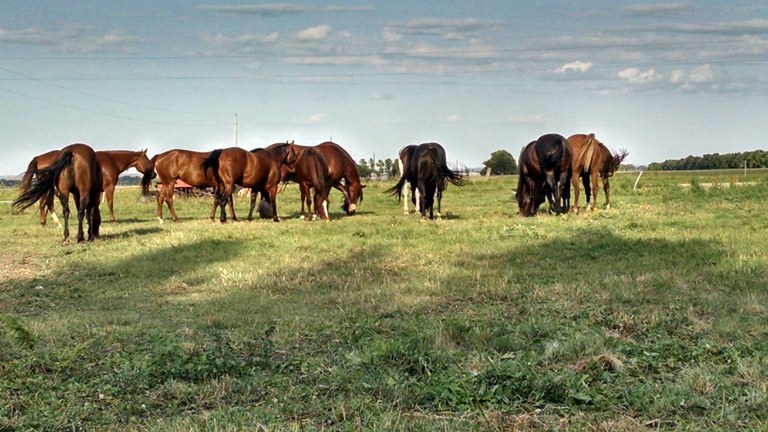Horse Manure Management
One 1,000-pound horse can produce 50 pounds of manure and urine per day. Fifty pounds over one month equals 1,500 pounds of manure. Now mix that manure and urine with wood shavings if the animal is stalled and you end up with approximately 1,950 pounds of spent nutrients per horse per month. Manure contains valuable nutrients plants need. If the nutrients are not used they become a pollutant and are wasted. Knowing the amount of manure produced on your farm will help you make informed decisions of what your options may be in regards to manure management.
In ND, there are manure stacking or stockpiling guidelines to help animal owners decide which storage option is best for their farm.
- Short-term Manure Stockpiles: Manure may not be stockpiled for more than nine months at short-term stockpile locations. The same location cannot be used from year to year.
- Permanent Manure Stockpiles: Manure stockpiles for more than nine months must be stored at a permanent stockpile location. Involves soil investigation and regulatory oversight.
No matter which option you choose, stockpiling site selection is key. Sandy soils have rapid permeability and allows nitrate to move quickly through the soil to ground water (leaching), while loamy or clayey soils have slower permeability which helps retain nitrate in the soil profile. Manure stockpiles may not be located in gravel pits, or any other excavations; along streams or lakes; within a flood plain; or, within 50 feet of a private water supply well or 100 feet of a public water supply well.
Aside from the pollution factor, there are other reasons you will want to consider your manure management strategies including flies, bacteria and pathogens, rodents, odors, internal parasites, and weed seeds.
One way to manage your horse’s manure is through composting, which is a thermophilic (heat-loving) decomposition process. You will find a guide to the process and management of animal manure compost here: https://www.ag.ndsu.edu/publications/livestock/composting-animal-manures-a-guide-to-the-process-and-management-of-animal-manure-compost. Composting your horse’s manure not only kills pathogens and reduces weed seeds, it also has the ability to kill fly larvae as well as internal parasite larvae!
This spring, NDSU Extension has hosted a Horse Management Webinar series. You can find all the recorded webinars with resources here: https://www.ag.ndsu.edu/lem/horse-management-webinars. The series includes entire presentations on manure management, spring/summer grazing management and internal/external parasite management. We are wrapping up the series on June 3 at noon CST with a discussion about horse immunity and biosecurity. You can register for the webinar here: www.tinyurl.com/NDSUHorseBiosecurity2020.
With just over 45,000 horses in North Dakota there is a good reason to learn about managing the road apples.

Horses grazing in western North Dakota.
Mary Keena
Mary.Keena@ndsu.edu
Extension Specialist – livestock environmental management


